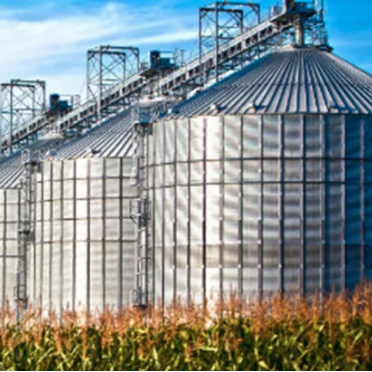
How to Prevent Grain Bin Suffocation
The tragedy repeatedly makes news headlines: People entrapped in grain storage bins with only seconds to react before they are engulfed and suffocated.
Understanding how people get trapped in grain bins
Scenario 1: A worker enters the top of a grain bin, and the auger begins running to unload the grain. Within five seconds, the worker becomes trapped. The flowing grain behaves like quick sand, pulling the worker down. After 22 seconds, he is completely covered.
Scenario 2: Unbeknownst to him, a worker stands on a “bridge” formed by clumped grain due to moisture or mold. Beneath the firm layer, there is a pocket of space and, when it collapses, the worker becomes buried. When unloading begins, the worker is instantly trapped.
Scenario 3: A worker is standing on the floor attempting to dislodge grain that’s accumulated on the side of the bin. The pile collapses onto the worker.
Scenario 4: Without warning, a bin can develop hazardous atmosphere or a lack of oxygen.
How to prevent grain bin suffocation
Considering it is one of the top causes of farm deaths, it’s hard to believe grain storage bin suffocation is easily preventable. But it is, as long as employers:
- Turn off and disconnect, lockout and tag, or block off all mechanical, electrical, hydraulic, and pneumatic equipment that presents a danger. Grain must not be emptied or moved into or out of the bin while workers are inside.
- Do not allow walking down grain to make it flow.
- Prohibit entry onto or below a bridging condition, or where grain is built up on the side of the bin.
- Provide workers entering a bin from a level at or above stored grain, or walking or standing on stored grain with a body harness connected to a lifeline or boatswain’s chair. The lifeline should be long enough to prevent a worker from sinking more than waist-deep in grain.
- Give workers rescue equipment specifically for rescue from the bin.
- Station an observer who is equipped to provide assistance and perform a rescue outside the bin. Make sure the observer and workers who enter the bin maintain communications.
- Test the air within a bin for oxygen content and the presence of hazardous gases before entering.
- Obtain a permit each time a worker enters a bin. The exception is if the employer will be present during the entire operation. The permit must certify that before workers enter the bin, they met the precautions above.
Information from the U.S. Department of Labor Occupation Safety and Health Administration. Reposted from Secura Insurance Blog 9/19/19
